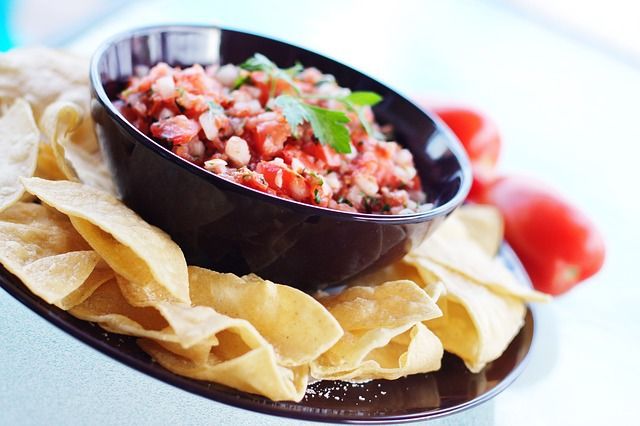Northern Mexico's exuberant cuisine in time and space
The gastronomy of the northern states of Mexico is extraordinary, although it lacks the diversity of Mexico's tropical and subtropical regions.

The gastronomy of Mexico's northern states is extraordinary, although it doesn't have the diversity of Mexico's tropical and subtropical regions. This is obvious: it is cuisine from the semi-desert and sometimes from the desert itself. The geographic and climatic reality of northern Mexico is expressed in the contemporary term Aridoamerica, coined as a contrast to Mesoamerica, a kind of southern counterpart. That concept alludes to a common characteristic of aridity and this entails a similar scheme of biodiversity throughout the region.
These are desert and semi-desert areas with very similar flora and fauna. Remember that 31% of the national territory is arid and 36% is semi-arid, while only 33% is humid or sub-humid. The plant and animal species that exist in Aridoamerica are much more numerous than one might suppose since being deserts lends itself to error. Deserts are particularly rich in biodiversity.
They appear inhospitable: dry, hot, dusty, and full of thorns. Nevertheless, they are surprising ecosystems that oscillate between a discreet life, latent in dry seasons, and an exuberance of small organisms and many not so small during the rains, although they are not abundant. The rain brings to the desert a reproductive frenzy in the plants, with its consequences on the animals.
In Arido America there are numerous inner slopes or closed hydrologic basins, that is, they do not drain into the sea, but preserve rainwater in lagoons that dry up during the summer, forming water holes or swamps in the middle of the desert, like oases. (These closed basins occupy 16% of the country's territory). In such microclimates, certain particular species are present.
The pre-Hispanic and even viceregal inhabitants of the region we are dealing with had many characteristics in common: they were semi-nomadic peoples of gatherers and hunters, occasionally also dedicated to fishing. Their feeding habits were linked to the seasons of the year since nomadism is due to the search for fruits and animals according to their variable presence in time and space.
In the spring, the flowers of yucca and nopal, the tuna and the pitahaya, the leaves of the nopal, and the aguamiel of diverse maguey, which they drank as water for use, stood out as nutrients. Some animals were added, such as rabbits, worms, ants, other insects, snakes, and little dogs of the plain. In the aguajes, true oases in the deserts of Aridoamerica, in the spring one could catch small water turtles.
In the summer, one of the main plants of the desert began to be harnessed, and so the mesquite pods were consumed, sucking their inner flesh when fresh and grinding the dry seeds to make flour, with which pinole and bread (cooked over the coals) were made. They also ate the guamúchil pods, the quiotes of the maguey, the flowers of the same agaves, and its root cooked in a kind of hole barbecue. They began to hunt the wild boar or peccary, the deer, the tlacuache, the quail, and the earth turtle. In the aguajes, quelites, watercress, and purslane were added to the diet.
With the autumn the consumption of oak acorns, pine nuts, yucca dates, oregano, grass seeds, mountain chilies, mezcal heart also in barbecue, tule root in the marshes, and hunting animals such as chachalaca, in addition to collecting honey.
With the arrival of the winter, the most precarious station in foods, they ate the dry bagasse of the mezcal that only they had chewed months behind to remove the sweet juice, the flour of mesquite revolted with flour of milled bones, the bread of acorn and mesquite, roots, and turkeys of the mount. In the aguajes, it was possible, sometimes, some fishing, even of aquatic snakes, and the hunting of ducks.
The herds of bison or cíbolos came to graze until today's Mexican lands, although in less quantity than to the north. That was the most coveted game, besides deer and pronghorn, and since the abundant meat exceeded the momentary needs of the tribes, the remaining was dried in the sun for later consumption. Then came the tasajo or mashed meat, so-called because the meat was hit with a stone to thin it and thus dehydrate it better.
Throughout the route of what was the royal road from the city of Chihuahua to Santa Fe, New Mexico, the custom of dried meat is preserved to this day, and of course in all Mexican border states.
The main racial crossbreeding between the indigenous people and the Spaniards occurred in Mesoamerica since it was there that the Indians constituted sedentary civilizations. However, in Aridoamerica there were no facilities for this crossbreeding, due to the semi-nomadic condition of the original inhabitants.
The latter were called barbarians by the Spaniards and by the mestizos; unleashed the vicious circle of violence, certainly, they all were: the natives stole cattle and devastated the population, taking the hair of prisoners still alive and, of course, the dead. The whites organized Indian hunts and even put a price on every Apache scalp that was handed over to the authorities. This happened in Chihuahua in 1850, when the price was established at two hundred pesos for each scalp.
Notwithstanding the almost inexistence of genetic crossbreeding in these northern regions, there was a cultural crossbreeding, which gradually took place. The food habits of Spaniards and mestizos, already Mexican, necessarily acclimated to the conditions of the lands they arrived at. The result is not the coarse expression so repeated that where roasted meat begins, culture ends.
Mexican northern states' food is remarkable, despite not having the variety of Mexico's tropical and subtropical zones. One thing is evident: it is a semi-desert cooking and at times it is even a dessert meal.
Source: SIC Mexico




